#thomas elliott artist illustrator
Text

Moth Man ink painting
#art#artist#painting#ink#traditional art#illustration#illustrator#thomas elliott#thomas elliott artist illustrator#moth man#cryptid#super natural#paranormal
780 notes
·
View notes
Text
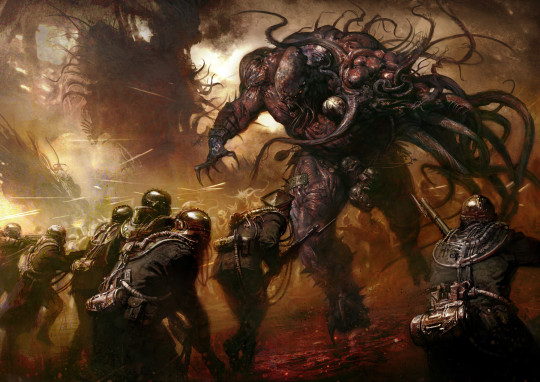

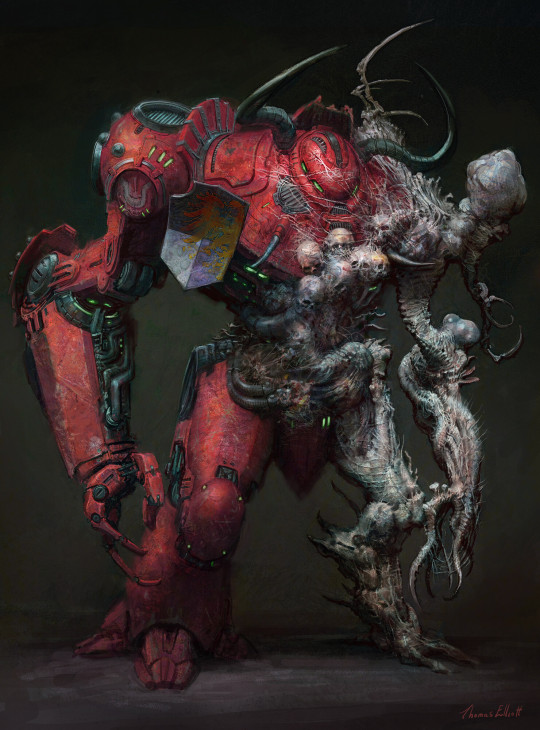

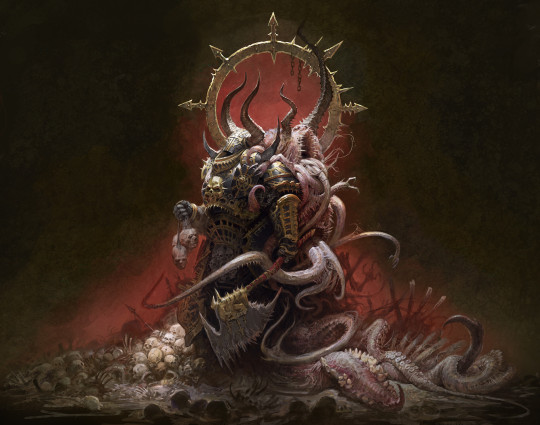

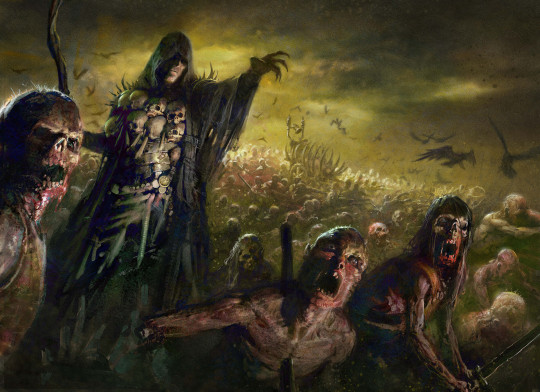
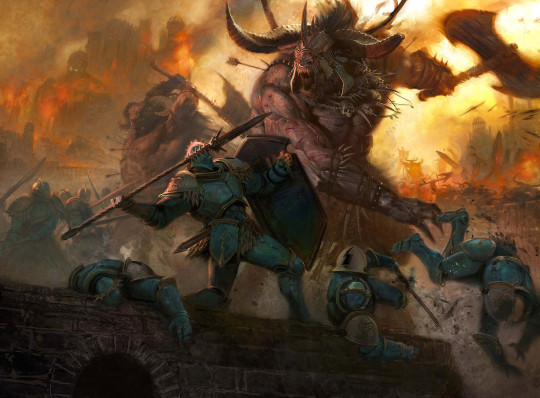


Thomas Elliott
13 notes
·
View notes
Photo

August 30, 2022 The Creative Multiverse presents: #AuGhost #AuGhost2022 Day 30 (Love) E.T. the Extra-Terrestrial (or simply E.T.) is a 1982 American science fiction film produced and directed by Steven Spielberg and written by Melissa Mathison. It tells the story of Elliott, a boy who befriends an extraterrestrial dubbed E.T., who is left behind on Earth. Along with his friends and family, Elliott must find a way to help E.T. find his way home. The film stars Dee Wallace, Henry Thomas, Peter Coyote, Robert MacNaughton and Drew Barrymore. #CreativeMultiverse #ET #PhoneHome #art #artwork #artistofinstagram #artist #artistforhire #Custom #create #drawing #drawingaday #draweveryday #illustration #pencil #sketch #ink #colordrawing #Sketchcard #fabercastell #copic #twitchstreamer #blickartmaterials https://www.instagram.com/p/Ch_J6vAMZba/?igshid=NGJjMDIxMWI=
#aughost#aughost2022#creativemultiverse#et#phonehome#art#artwork#artistofinstagram#artist#artistforhire#custom#create#drawing#drawingaday#draweveryday#illustration#pencil#sketch#ink#colordrawing#sketchcard#fabercastell#copic#twitchstreamer#blickartmaterials
0 notes
Photo
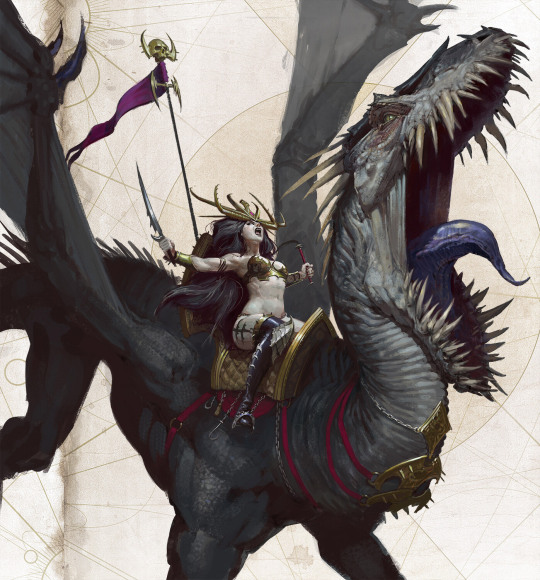








The dark sci-fi and fantasy themed creations of Thomas Elliott - https://www.this-is-cool.co.uk/the-dark-sci-fi-fantasy-art-of-thomas-elliott/
#Thomas Elliott#fantasy artist#fantasy illustrator#digital art#digital illustrator#games workshop#illustrator#horror art#sci-fi art#sci-fi artist#sci-fi illustrator#this-is-cool#scififantasyhorror
494 notes
·
View notes
Photo

Cthulhu Portrait by Thomas Elliott https://www.artstation.com/artwork/ZG6m2X
52 notes
·
View notes
Photo

The Edinburgh Companion to Gothic and the Arts (Edinburgh Companions to Literature and the Humanities), edited by David Punter, Edinburgh University Press, 2019. Cover image by Irina Kharchenko, info: edinburghuniversitypress.com.
The Gothic in all its artistic forms and ramifications is traced from the medieval to the twenty-first century. From architecture, painting and sculpture through music, ballet, opera and dance to installation art and the graphic novel, each of the 33 chapters reflects on and weighs in on the ways in which the Gothic is taken up in the art forms and modes under examination. An Introduction discusses Gothic as a changing cultural form across the centuries with deep psychological roots. This is followed by sections on: architectural arts; the visual arts; music and the performance arts; the literary arts; and media and cultural arts.
Contents:
List of Illustrations
List of Contributors
Introduction – David Punter
Part I: Architectural Arts
1. Gothic and Architecture: Morris, Ruskin, Carlyle and the Gothic legacies of the Lake Poets – Tom Duggett
2. Gothic and the Built Environment: Literary Representations of the Architectural Uncanny and Urban Sublime – Sara Wasson
3. Gothic and Design: The Geometrical Roots of Gothic Aesthetics in the Cologne Cathedral Choir – Robert Bork
4. Gothic and Sculpture: From Medieval Piety to Modern Horrors and Terrors – Peter N. Lindfield and Dale Townshend
5. Gothic and Installation Art: Spectral Materialities, Monstrous Ephemera – Katarzyna Ancuta
Part II: The Visual Arts
6. Gothic and Earlier Painting: Nightmares and Premature Burials in Fuseli and Wiertz – Maria Parrino
7. Gothic, Caricature, Cartoon: Insatiable Nightmares – Franz Potter
8. Gothic and Portraiture: Resemblance and Rupture – Kamilla Elliott
9. Gothic and Surrealism: Subculture, Counterculture and Cultural Assimilation – Avril Horner
10. Gothic and Modern Art: The Experience of Ivan Albright – Antonio Alcalá González
11. Gothic and Photography: The Darkest Art – David Annwn Jones
Part III: Music and the Performance Arts
12. Gothic and Music: Scoring ‘Silent’ Spectres – Kendra Preston Leonard
13. Gothic and Opera: Overwhelming Passions and Irrational Dreams – Anne Williams
14. Gothic, Ballet, Dance: The Aesthetics and Kinaesthetics of Death – Steven Bruhm
15. Gothic and Contemporary Music: Dark Sound, Dark Mood, Dark Aesthetics – Isabella van Elferen
Part IV: The Literary Arts
16. Gothic and Graveyard Poetry: Imagining the Dead (of Night) – Eric Parisot
17. Gothic Chapbooks and Ballads: Making a Long Story Short – Doug Thomson and Wendy Fall
18. Gothic and Nineteenth-Century Poetry: Thresholds of Influence, Possibilities and Desire – Angela Wright
19. Gothic and Modern Poetry: The Poetics of Transgression – Maria Beville
20. Gothic and the Eighteenth-Century Novel: At Home in the English Style – Robert Miles
21. Gothic and the Nineteenth-Century Novel: The Art of Abjection – Jerrold E. Hogle
22. Gothic and Recent Fiction: Fears of the Past and of the Future – David Punter
23. Gothic and the Short Story: Revolutions in Form and Genre – Sarah Ilott
24. Gothic, Melodrama, Victorian Theatre: Gothic Drama to 1890 – Clive Bloom
25. Gothic and Modern Theatre: Staging Modern Cultural Trauma – Ardel Haefele-Thomas
26. Gothic and Children’s Literature: Wolves in Walls and Clocks in Crocodiles – Anna Jackson
27. Gothic and Young Adult Literature: Werewolves, Vampires, Monsters, Rebellion, Broken Hearts and True Romance – Gina Wisker
Part V: Media and Cultural Arts
28. Gothic and Cinema: The Development of an Aesthetic Filmic Mode – Xavier Aldana Reyes
29. Gothic and Television: The Monster in the Living Room – Linnie Blake
30. Gothic and Comics: From The Haunt of Fear to a Haunted Medium – Julia Round
31. Gothic and the Graphic Novel: From the Future Shocks of Judge Dredd to the Aftershocks of DC Vertigo – Stuart Lindsay
32. Gothic and Videogames: Playing with Fear in the Darkness – Dawn Stobbart
33. Gothic and Internet Fiction: Digital Affordances and New Media Fears – Neal Kirk
Index
#book#essay#weird essay#gothic essay#gothic studies#gothic#gothic architecture#gothic art#cultural arts#david punter#gothic and the arts
23 notes
·
View notes
Photo
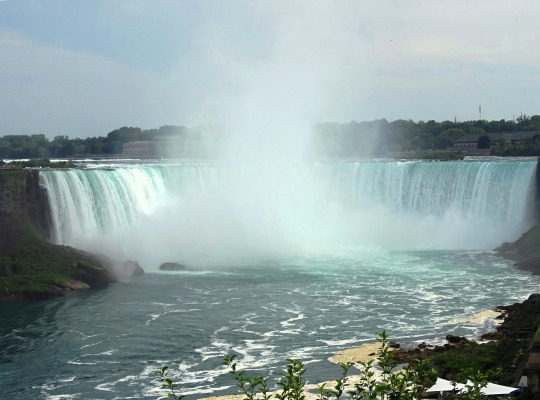






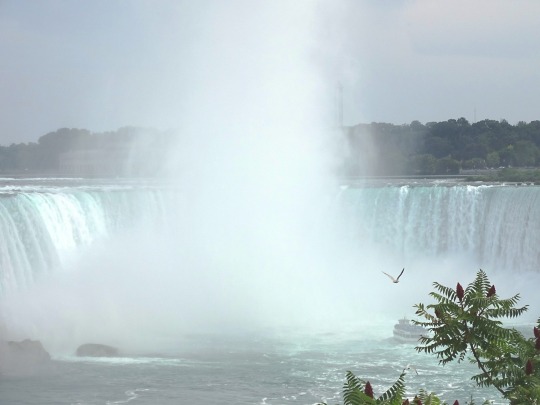


Horseshoe Falls (No. 2)
Theories differ as to the origin of the name of the falls. According to Iroquoian scholar Bruce Trigger, Niagara is derived from the name given to a branch of the local native Neutral Confederacy, who are described as being called the Niagagarega people on several late-17th-century French maps of the area. According to George R. Stewart, it comes from the name of an Iroquois town called Onguiaahra, meaning "point of land cut in two".
Henry Schoolcraft reported:
Niagara Falls. This name is Mohawk. It means, according to Mrs. Kerr, the neck; the term being first applied to the portage or neck of land, between lakes Erie and Ontario. By referring to Mr. Elliott's vocabulary, (chapter xi) it will be seen that the human neck, that is, according to the concrete vocabulary, his neck, is onyara. Red Jacket pronounced the word Niagara to me, in the spring of 1820, as if written O-ne-au-ga-rah.
Many figures have been suggested as first circulating a European eyewitness description of Niagara Falls. The Frenchman Samuel de Champlain visited the area as early as 1604 during his exploration of Canada, and members of his party reported to him the spectacular waterfalls, which he described in his journals. The Finnish-Swedish naturalist Pehr Kalm explored the area in the early 18th century and is credited with the first scientific description of the falls. The consensus honoree for the first description is the Belgian missionary Louis Hennepin, who observed and described the falls in 1677, earlier than Kalm, after traveling with the explorer René-Robert Cavelier, Sieur de La Salle, thus bringing the falls to the attention of Europeans. Further complicating matters, there is credible evidence the French Jesuit missionary Paul Ragueneau visited the falls some 35 years before Hennepin's visit while working among the Huron First Nation in Canada. Jean de Brébeuf also may have visited the falls, while spending time with the Neutral Nation.
In 1762, Captain Thomas Davies, a British Army officer and artist, surveyed the area and painted the watercolor, An East View of the Great Cataract of Niagara, the first eyewitness painting of the falls.
During the 19th century, tourism became popular, and by mid-century, it was the area's main industry. Theodosia Burr Alston (daughter of Vice President Aaron Burr) and her husband Joseph Alston were the first recorded couple to honeymoon there in 1801. Napoleon Bonaparte's brother Jérôme visited with his bride in the early 19th century.
In 1825, British explorer John Franklin visited the falls while passing through New York en route to Cumberland House as part of his second Arctic expedition, calling them "so justly celebrated as the first in the world for grandeur".
In 1837 during the Caroline affair, a rebel supply ship, the Caroline, was burned and sent over the falls.
In March 1848, an ice blockage caused the falls to stop; no water (or at best a trickle) fell for as much as 40 hours. Waterwheels stopped, and mills and factories shut down for having no power.
Later that year, demand for passage over the Niagara River led to the building of a footbridge and then Charles Ellet's Niagara Suspension Bridge. This was supplanted by German-born John Augustus Roebling's Niagara Falls Suspension Bridge in 1855. After the American Civil War, the New York Central Railroad publicized Niagara Falls as a focus of pleasure and honeymoon visits. With increased railroad traffic, in 1886, Leffert Buck replaced Roebling's wood and stone bridge with the predominantly steel bridge that still carries trains over the Niagara River today. The first steel archway bridge near the falls was completed in 1897. Known today as the Whirlpool Rapids Bridge, it carries passenger vehicles and trains between Canada (through Canadian Customs Border Control) and the U.S.A. just downstream of the falls.
In about 1840, the English industrial chemist Hugh Lee Pattinson traveled to Canada, stopping at the Niagara Falls long enough to make the earliest known photograph of the falls, a daguerreotype in the collection of Newcastle University. It was once believed that the small figure standing silhouetted with a top hat was added by an engraver working from imagination as well as the daguerreotype as his source, but the figure is clearly present in the photograph.[24] Because of the very long exposure required, of ten minutes or more, the figure is assumed by Canada's Niagara Parks agency to be Pattinson himself.[24] The image is left-right inverted and taken from the Canadian side. Pattinson made other photographs of the Horseshoe Falls as well as of Rome and Paris. These were then transferred to engravings to illustrate Noël Marie Paymal Lerebours' Excursions Daguerriennes (Paris, 1841–1864).
Source: Wikipedia
#Horseshoe Falls#Niagara River#Niagara Falls#Niagara Gorge#travel#USA#Ontario#New York#Canada#waterfall#landmark#tourist attraction#view#USA-Canada border#Canada–United States border#Maiden of the Mist#boat#ship#Canadian Falls#cliff#bluff#misty#detail#turqoise waters#algae#cityscape#landscape#original photography#summer 2018
1 note
·
View note
Text
i.m.a.g.e.s #1
1. Escaping the confines of museums
[ Artist: Banksy - modern street artist ]

2. Collapsing boundaries between "high" and "low"
[ Artist: Elliott Earls - “Levitation and the Blood of the Lamb” - Chromogenic paint - 2015 ]

3. Rejecting originality
[ Artist: Claes Oldenburg - “Shuttlecocks” - Canvas filled with foam rubber and cardboard boxes, painted with acrylic paint - 1994 ]

4. Jouissance
[ Artist: Alex Chinneck - “Unzipped” - 2019 ]

5. Working collaboratively
[ Artists: Andy Warhol and Jean-Michel Basquiat - “Eggs” - 1985 ]

6. Appropriating
[ Artist: Marcel Duchamp - “L.H.O.O.G” - 1919 ]
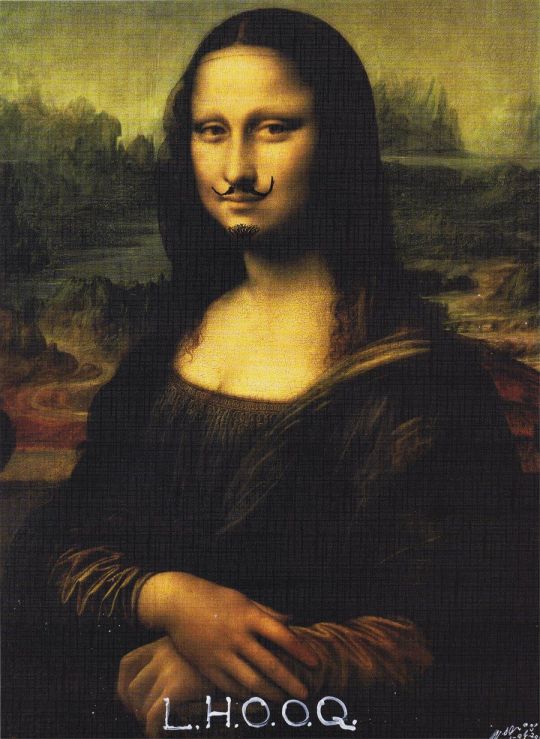
7. Simulating
[ Artist: Andy Warhol - “Marilyn Diptych” - Acrylic paint on canvas - 1962 ]

8. Hybridizing
[ Artist: Gonkar Gyasto - “Angel” - 2007 ]

9. Mixing media
[ Artist: Rebekah Potter - “Aerial Anatomy of an Unseen Event” - hand-dyed, hand-stitching - 2010 ]

10. Layering
[ Artist: Thomas Barbey - “Swell Time in Town” - photography - date is unknown ]

11. Mixing codes
[ Artist: Kara Walker - “Ill be a Monkey’s Uncle” - Lithograph on Somerset paper - 1996 ]

12. Re-contextualizing
[ Artist: Meret Oppenheim - “Le Dejeuner en Fourrure” - Fur covered cup - 1936
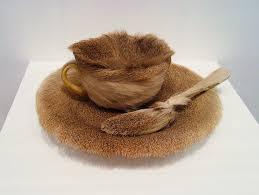
13. Confronting the gaze
[ Artist: Chris Ofili - “The Holy Virgin Mary” - acrylic paint on canvas - 1996 ]
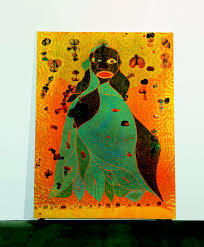
14. Facing the abject
[ Artist: Sarah Lucas - “Chicken Knickers” - photography - 1997 ]
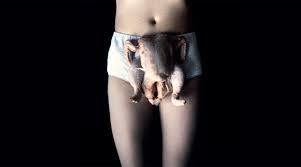
15. Constructing Identities
[ Artist: Lorna Simpson - (May, June, July, August 57/09) #8 - photography - 2008 ]
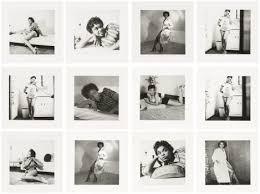
16. Using narratives
[ Artist: George Tames - John F. Kennedy in the Oval Office - “The Loneliest Job in the World” - photography - 1961

17. Creating metaphors
[ Artist: Stephen Althouse - “Autumn Plant” - pigment paint - 2003 ]

18. Irony, parody, and dissonance
[ Artist: Terry Border - “Another Self-Portrait” - illustration - 2017 ]

2 notes
·
View notes
Photo
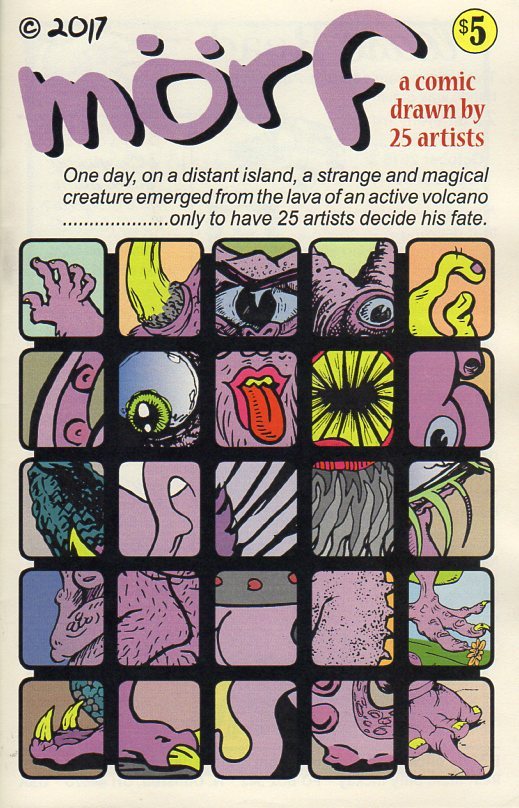
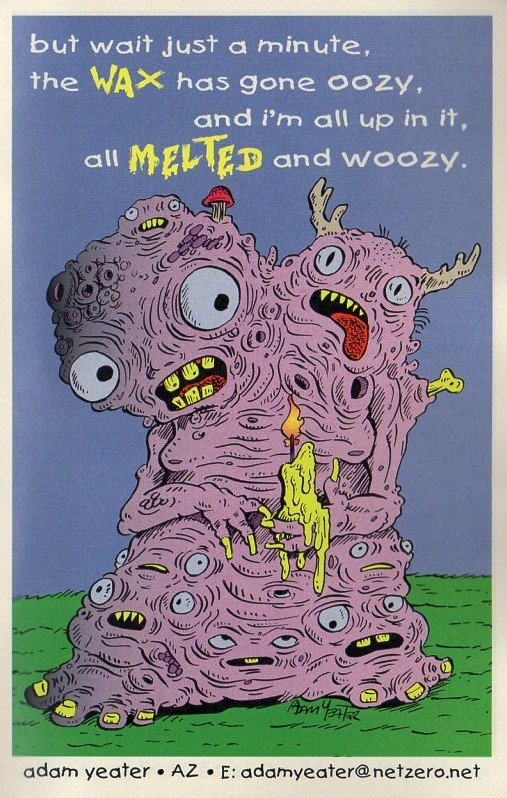



Mörf https://buff.ly/2m2ybeT is a 28-page, full color, digest size, exquisite corpse style continuous story illustrated by 25 artists. Created, written, and edited by Billy McKay.
This creative comic is the brainchild of Billy McKay. Billy’s vision was to bring 25 artists together and share a single image of his character Mörf with them, one artist at a time. The first artist was to draw their version of the character, changing as the liked, based only on a single image provided to them by Billy. The second artist then received the first artist’s drawing and repeated the process, and the third artist received the second’s and so on, and so on until all 25 artists had drawn and changed Mörf. After all the drawings were done Billy collected them, colored them, and wrote a continuous poetic story that stretched across all versions of Mörf and tied each image into the next! What an impressive undertaking, and what a visually stunning and delightful book!
The talented artists featured in Mörf are: Billy McKay, Marc Palm, Max Clotfelter, Jeff Heidel, Dale Martin, Ryan Holgersen, Micah Liesenfeld, Chad Woody, Henry Knoth, Warren Elliott (that’s me!), Jimbo Easter, Nate McDonough, Andrew Goldfarb, Adam Yeater, Jesse Thomas, O’Ryan McGowan, Joseph Tenney, Pam Bliss, Suzanne Baumann, Carrie McNinch, Jason Young, Bruce Orr, Bob Corby, Tom Cherry, and Bob Vojtko!
You can get your hands on the crazy, colorful comic that is Mörf at https://buff.ly/2m2ybeT
19 notes
·
View notes
Text
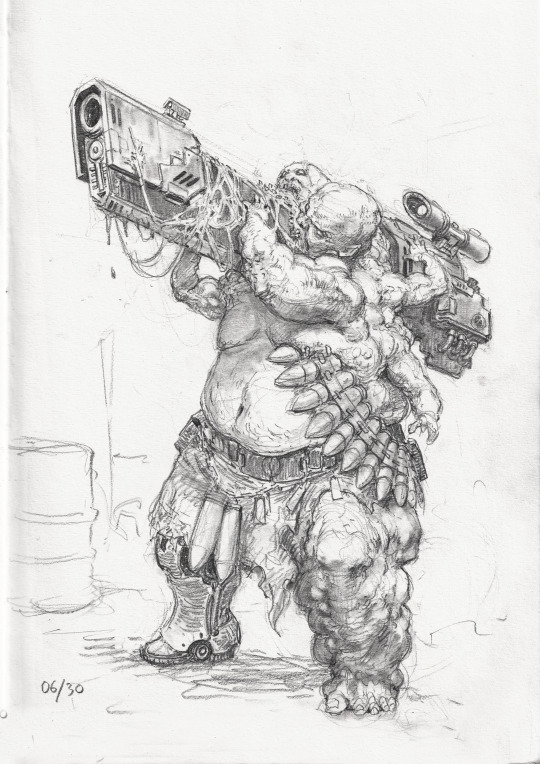


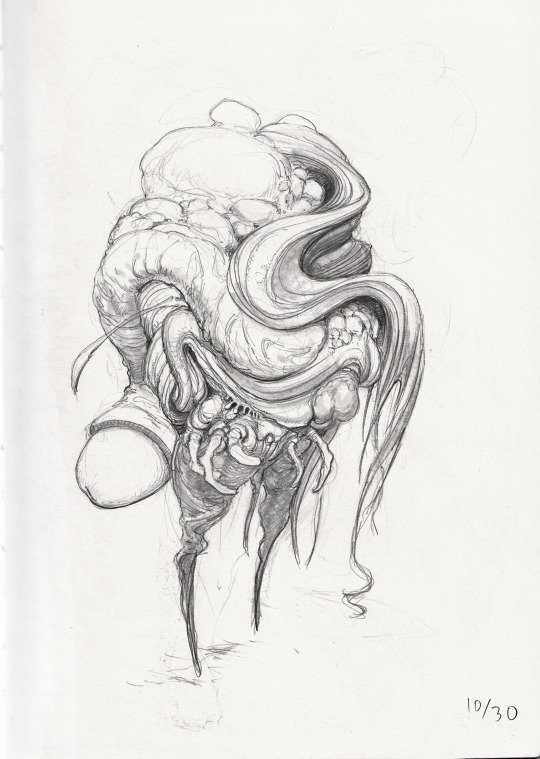
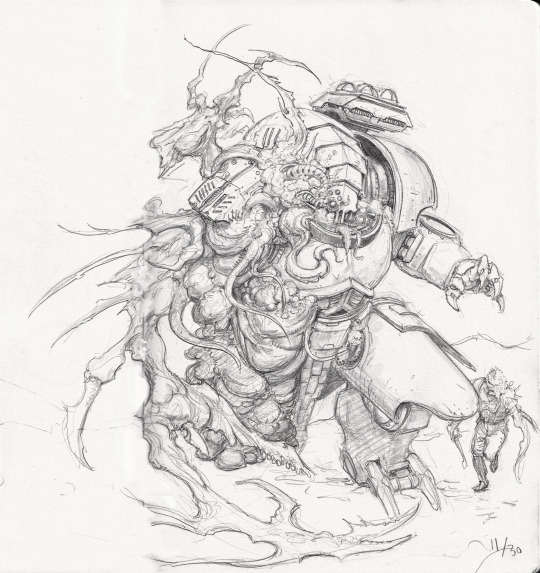

I set myself the challenge of drawing a mutant for every day of November. Here are some of my favourites.
#art#artist#drawing#doodle#sketch#sketch book#pencil#pencil drawing#pencil sketch#illustration#illustrator#thomas elliott#thomas elliott artist illustrator#mutant#monster#concept art#character design#character art
285 notes
·
View notes
Photo
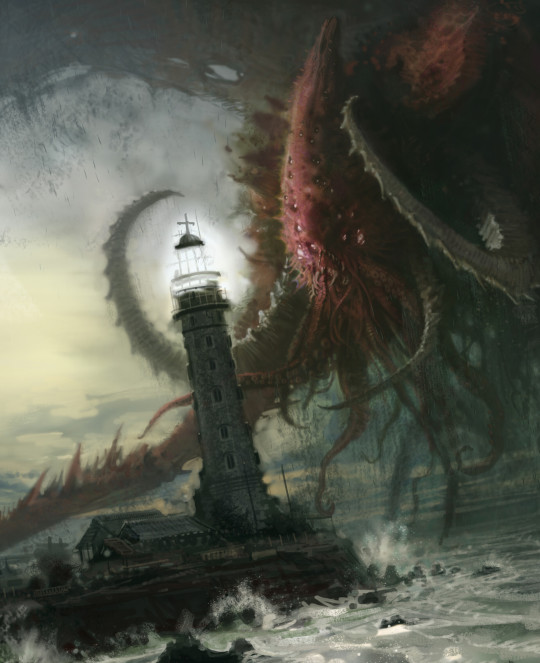
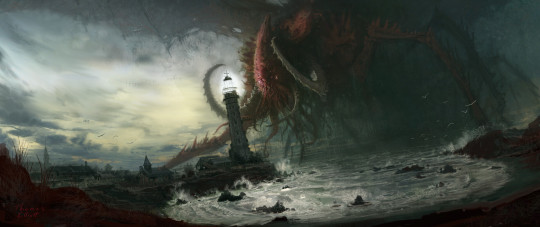

Cthulhu by Thomas Elliott
4 notes
·
View notes
Photo

Jan 30, 2022 Creative Multiverse presents: #Artuary2022 day 30 (treats) Reeses Peices , made popular in the movie E.T. E.T. the Extra-Terrestrial (or simply E.T.) is a 1982 American science fiction film produced and directed by Steven Spielberg and written by Melissa Mathison. The film tells the story of Elliott, a boy who befriends an extraterrestrial dubbed E.T., who is stranded on Earth. Along with his friends and family, Elliott must find a way to help E.T. return home while avoiding the government. The film stars Dee Wallace, Henry Thomas, Peter Coyote, Robert MacNaughton, and Drew Barrymore. #CreativeMultiverse #Artuary #ET #80s #ettheextraterrestrial #art #artwork #artistofinstagram #artist #artistforhire #Custom #create #drawing #drawingaday #draweveryday #illustration #pencil #sketch #ink #colordrawing #Sketchcard #fabercastell https://www.instagram.com/p/CZ1MmsmuLM5/?utm_medium=tumblr
#artuary2022#creativemultiverse#artuary#et#80s#ettheextraterrestrial#art#artwork#artistofinstagram#artist#artistforhire#custom#create#drawing#drawingaday#draweveryday#illustration#pencil#sketch#ink#colordrawing#sketchcard#fabercastell
2 notes
·
View notes
Photo

Blood Knights by Thomas Elliott https://www.artstation.com/artwork/mDerYv
23 notes
·
View notes
Text
Whole bunch of new collection guides!
Folks at the UK Libraries Special Collection Research Center have been BUSY. Below is a list of all the new and updated collection guides (a.k.a. finding aids in archives lingo) available on ExploreUK. Highlights include:
Victor and Carolyn Hammer papers, prominent printers who worked at UK’s King Library Press (a fine arts press still in operation)
Kentuckians for the Commonwealth records, a grassroots community organization working for economic justice, education, and much more
Louisville Courier Journal Washington Bureau records, research materials for news stories from the 1950s-2010s

Here’s the full list:
NEW FINDING AIDS
Hellmut Lehmann-Haupt papers (62m3); The Hellmut Lehmann-Haupt papers (dated 1909-1978; 8.8 cubic feet; 22 boxes) consist of manuscripts, books, pamphlets, photographs, negatives, books, and research material, which document his career as a bibliographer, author, and teacher.
Lawrence Sidney Thompson Printing in Colonial Spanish America manuscript (63m259) The Lawrence Sidney Thompson Printing in Colonial Spanish America manuscript (dated 1962, undated; 0.35 cubic feet; 1 box) consists of the typescript, illustrations, and photographic negatives for the text written by Hensley C. Woodbridge and Lawrence S. Thompson.
George Blackburn Kinkead papers (64m101) The George Blackburn Kinkead papers (dated 1905-1940; 0.6 cubic feet; 2 boxes) contain addresses and scrapbooks belonging to George Blackburn Kinkead, a Lexington, Kentucky attorney.
Leonard R. Casper Robert Penn Warren: The Dark and Bloody Ground manuscript (64m140) The Leonard R. Casper Robert Penn Warren: The Dark and Bloody Ground manuscript (dated circa 1960; 0.3 cubic feet; 1 box) consists of two manuscript drafts and handwritten notes for Robert Penn Warren: The Dark and Bloody Ground, a critique of several major works by Robert Penn Warren.
Lancaster family papers (65m200) The Lancaster family papers (dated 1780-1916, undated; 1.35 cubic feet; 3 boxes) consists of letters and business papers, which document the Lancaster family of Georgetown, Kentucky.
Port Surgeon's Division, Hampton Roads Port of Embarkation photographs (65m24) The Port Surgeon's Division, Hampton Roads Port of Embarkation photographs (dated 1942-1946; 0.75 cubic feet; 3 boxes) consists of a historical report concerning the Hampton Roads Port of Embarkation during World War II and photographs used to illustrate the report.
James Lyle Cassidy railroad collection (68m53) The James Lyle Cassidy railroad collection (dated 1945-1966; 1.13 cubic feet; 3 boxes) contains pamphlets, short books, photographs, mementos, and magazines about trains and railways with a focus on the southern United States during the mid twentieth century.
Family Service of Lexington and Fayette County records (68m65) The Family Service of Lexington and Fayette County records (dated 1945-1961; 0.45 cubic feet; 1 box) include annual reports, board member correspondence, meeting agendas, and minutes relating to the work of the agency within the Fayette County, Kentucky community.
American Library Association Committee on Resources of Southern Libraries records (68m89) The American Library Association Committee on Resources of Southern Libraries records (dated 1934-1938, undated; 0.23 cubic feet; 1 box) consists of a collection of surveys gathered for a report edited by Margaret I. King about sources available in Kentucky libraries in the 1930s.
Henry Clay papers (71m13) The Henry Clay papers (dated 1813-1852; 0.23 cubic feet; 1 box) consists of letters, financial notes, a print, campaign buttons, a ribbon, and a newspaper that all relate to Kentucky politician Henry Clay.
Victor and Carolyn Hammer papers (1997ms409) The Victor and Carolyn Hammer papers collection contains articles and book manuscripts by the prominent printer Victor Hammer, biographical manuscripts written about Victor Hammer after his death, Carolyn Hammer's papers collected for King Library while she was curator of rare books for the University of Kentucky, as well as, the financial and business records for Anvil Press.
Clifford Amyx papers (1999ua082) The Clifford Amyx papers (dated 1957-1997, undated; 6.37 cubic feet; 17 boxes, 3 flat boxes, 1 wrapped item) comprise correspondence, collected works, research materials, stamp collection, slides, and artworks that document the work of Amyx as a professor of art and art history in the University of Kentucky Art Department; his work to index and analyze the portraiture of Henry Clay and the imagery of Daniel Boone; and his work as an artist.
Zachary family papers (2007ms089) The Zachary family letters (dated 1934-1945; 1.13 cubic feet; 3 boxes) primarily consist of letters written during World War II from serviceman Alvin L. Zachary to his wife Nettie Rich Zachary of Liberty, Kentucky.
Calvin C. Morgan music collection (2009ms068) The Calvin C. Morgan music collection (dated circa 1900-1901; 0.26 cubic feet; 1 box) contains 14 items: 10 handwritten original music compositions by Calvin C. Morgan, two musical arrangements of Calvin C. Morgan original works by Robert Crawfor and Evan B. Spiers, and two pieces of text that appear to contain lyrical content by Calvin C. Morgan or seem related to other pieces in the collection.
Kentuckians for the Commonwealth records (2010ms005) The Kentuckians for the Commonwealth records (dated 1969-2014, undated; 30.71 cubic feet; 30 record storage cartons, 3 document storage boxes, 1 flat box) comprises operating records, newsletters, publications, videotapes, audio cassettes, scrapbooks, subject files, and posters that document the activities and operation of the grassroots community organization Kentuckians for the Commonwealth (KFTC).
Earl Wallace papers (2015ms084) Earl Wallace papers (dated 1895-2003, undated; 3.08 cubic feet; 19 boxes, 3 items, 1 tube) consists of correspondence, subject files, photographs, and audiovisual materials that document the life of Earl D. Wallace and the development and preservation of Shakertown at Pleasant Hill.
Jewish Federation of the Bluegrass records (2016ms010) The Jewish Federation of the Bluegrass records (dated 1939-2015, bulk 1977-2011; 6.07 cubic feet and 13.7 gigabytes; 11 boxes, 2 items, and 14,228 digital files) contain administrative records, publications, bulletins, financial records, photographs, meeting minutes, committee records, ledger books, and digital files documenting the community events, activities, and operation of the Jewish Federation of the Bluegrass.
Elliott family papers (2016ms042) The Elliot family papers (dated 1894-1899; 0.68 cubic foot; 2 boxes) comprise the handwritten recipes, newspaper clippings, cookery, and cookbooks collected and used by the Elliott family of central Kentucky.
Governor Julian M. Carroll speeches (2016ms057) The Governor Julian M. Carroll speeches collection (dated 1974-1977, undated; 1.8 cubic feet; 4 boxes) consists of speeches and remarks made by Julian Carroll during his term as governor of Kentucky.
Harlin family letters (2016ms059) The Harlin family letters (dated 1863-1881; 0.01 cubic feet; 4 items) consists of four letters written by members of the Harlin family concerning the Civil War in Kentucky and Tennessee as well as experiences in California.
Abbott Lawrence papers (2016ms064) The Abbott Lawrence papers (dated 1844-1845; 0.1 cubic feet; 6 items) consist of 6 letters sent to Massachusetts industrialist and Whig Abbott Lawrence concerning the Henry Clay's financial problems following his failed presidential campaign in 1844.
Louisville Courier Journal Washington Bureau records (2016ms077) The Louisville Courier-Journal Washington Bureau records (dated 1952-2010, bulk 1990-2006; 19.35 cubic feet and 1.44 gigabytes; 19 boxes, 321 digital files) contain research materials for news stories about the Blue Grass Army Depot, 2006 Comair plane crash, Paducah Gaseous Diffusion Plant, and Kentucky legislators.
Tommy Sharp and Anne Louise McMurtry correspondence (2017ms003) The Tommy Sharp and Anne Louise McMurtry correspondence (dated 1940-1946; 3.6 cubic feet; 8 boxes) comprises hundreds of almost daily World War II letters and enclosures written and sent by Anne Louise McMurtry and Tommy Sharp
Lancaster family photographs (PA65M200) The Lancaster family photographs (dated circa 1880-1890; 1.5 cubic feet; 5 boxes) contains many cartes de visite, cabinet cards, various sized albumen and printing-out paper prints and one cased daguerreotype of children and adults from 1880 until 1890.
UPDATED FINDING AIDS (many of which were collection level records that now have inventories)
Marie Hochstrasser papers (2010ms002)
Marita Garin papers (2012ms078)
Ellen Churchill Semple papers, 1900-1932 (46M139)
Laura Clay papers, 1906-1920 (bulk dates),1882-1941 (46m4)
Darbishire family papers, 1751-1948, 1883-1919 (bulk dates) (62m68)
Robert Stuart Sanders typescripts, 1963-1968 (63m350)
Edward Stewart Jones letters, 1918-1919 (66m13)
Cahill family papers, 1885-1935, 1894-1936 (bulk dates) (66m32)
Carl and Anne Braden Papers, 1954-1964 (66m38)
William Cassius Goodloe Civil War scrapbooks, 1860-1865 (66m39)
James Frazier Kelly daybook, 1829-1879, 1829-1845 (bulk dates) (67m220)
Leah Bodine Drake papers, 1918-1964, 1934-1964 (bulk dates) (68m100)
James Mitchum Graves ledger, 1849-1877, 1873-1877 (bulk dates) (68m56)
Fayette County, Ky. precinct records, 1964-1965 (68m98)
Thomas Harris Barlow papers, 1845-1955, 1856, 1954-55 (bulk) (68m99)
Simeon Slavens Willis papers, 1915-1959, 1932-1943 (bulk dates) (69m9)
Rebecca Caudill papers, 1919-1984 (81m1)
Anna Dudley McGinn Lilly papers (1997ms234)
John D. Whisman Papers, 1936-1995 (1997MS282)
Eastern Kentucky Housing Development Corporation records (1997ms353)
W. Hugh Peal manuscript collection (1997ms474)
University of Kentucky Athletics player files (2007ua023)
Eugene Erwin and William Russell papers, 1834-1868 (2009ms011)
Robert Houlihan papers (2009ms167)
Georgia Davis Powers papers (2011ms024)
Robert F. Sexton papers (2013ms0834)
Prichard Committee for Academic Excellence records (2013ms0846)
Ronald D Eller papers (2013ua007)
Robert G. Wallis scrapbook (46m7)
Kentucky Academy of Science Records (49m38)
Caleb Powers Papers, 1900-1941, 1903-1908 (bulk dates) (51w15)
Joseph Bruce Mathews papers (62m98)
Brent Spence papers (63m300)
Jesse Kitchen Lewis papers (64m2)
Grant Cochran Knight papers (64m77)
Scott family papers (64m98)
Informal Club records (72m16)
John Craig Shelby papers (72m23)
Isabel Cook Bureau scrapbooks (74m2)
Kentucky Rivers Coalition records (89m2)
Goebel family papers (M-121)
Bruce Ferguson scrapbook (M-133)
Percy Haly scrapbook (M-137)
Rebecca Caudill papers [microfilm] (M-557)
Edwin Green Bedford papers (48m19)
Grahamton Manufacturing Company records (53m18)
Preston-Johnston family papers (60m150)
Lyle family papers (62m49)
Cleanth Brooks papers (62m67)
Marks Coal Company records (63m352)
Carlos B. Embry papers (65m143)
Smither family papers (65m148)
Mary Kay Venable Weathers scrapbooks (46m34)
Clara Warland White scrapbooks and autograph books (46m5)
Mary Burch Breckinridge letters (59m64)
Todd family papers (62m40)
19 notes
·
View notes
Text
New from Every Movie Has a Lesson by Don Shanahan: MOVIE REVIEW: Lady and the Tramp
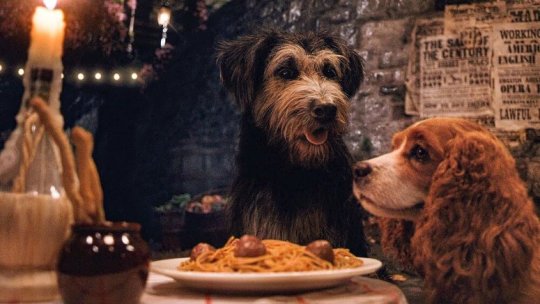
(Image: omeroyaar.com)
For warped reasons of splashy attention and an internal need to top themselves, the overfilled four-film 2019 slate of Disney re-imaginings have favored the gaudy, garish, and just plain loud. Granted, flashy noise appears to makes money, but it does not say much for the true quality of the picture. With unending charm and quaint simplicity, Disney+’s delightful Lady and the Tramp remake proves the old adage of “less is more.” All year long, its mainstream blockbuster peers tried every costly artificial and technological height to be a blaring chorus of bells and whistles, when all that was really needed were some cute, real animals backed often by a swanky band.
This new film is a wise and modest update to one of Disney’s best romances of its Silver Age. By utilizing actual dogs, many of which are rescued pets at that, with a mild computerized varnish, feels more tangible than fake in one of these Disney re-imaginings for the first time in a long time. This restraint of creative prudence is what defines its humble disposition and winning achievements.
Coming to life from the overhead illustrations of Dean Tschetter, Lady and the Tramp descends upon a stunning Victorian home on Christmas morning in the early 20th century. The young newlywed Jim Dear (Me, Earl and the Dying Girl’s Thomas Mann) gifts his wife Darling (Kiersey Clemons of Hearts Beat Loud) a cocker spaniel puppy. Given the name Lady and voiced by Tessa Thompson, the prized pet, through her bedspace takeovers, endears herself as a member of the family, one that is growing by a human bundle of joy at the same time Lady earns her official collar and tag.
LESSON #1: BABY MOVES IN, DOG MOVES OUT — In what should be a trauma listed right there with Stockholm Syndrome, a new baby will almost always absorb adult time and previously undivided attention away from four-legged best friends, even an easy-to-love one like Lady. Like its animated predecessor, this Lady and the Tramp keeps its roots in the imagined psychology and personification of what this might be like from the animal’s perspective.
When a dog-sitting misunderstanding with Aunt Sarah (Community favorite Yvette Nicole Brown) leads to a muzzle purchase and a runaway escape, Lady meets the slick, free-spirited loner Schnauzer, voiced by Justin Theroux, who would come to favor Tramp above his other temporary names around town. He teaches the well-groomed neophyte the owner-less life on the streets avoiding the persistent local dog catcher (Adrian Martinez of Focus). Scrapes lead to scraps and noodles turn into canoodled kinship as the two become close.
LESSON #2: THE PLIGHT OF THE HOMELESS — Family films, animated or otherwise, do enjoy their moments of addressing a societal problem in an approachable fashion. Lady and the Tramp then and now, with its riches-to-rags and rags-to-riches reversals, puts storytelling to the difference between being self-reliant and truly alone without the value of loving relationships. In a way, pets have that two with the shelter and adoption processes. Seeing this cuddly classic story play out with real animals better set off a spike in pet adoptions across the country.
LESSON #3: THE AUDIBLE VOLUME OF BRAVERY, CONFIDENCE, LOYALTY — The manifested personal improvement steps of Lady and the Tramp involve audibilizing in different ways. Lady has never asserted herself with a howl while the brash Tramp has never vocalized his broken feelings. She hasn’t found courage and he hasn’t learned to trust others again. Both help each other with those utterances which bring them together and crack Lesson #2. After all just as Darling extols “we’re not a family without you.”
Thanks to its period-era setting and the lively ragtime jazz of its Savannah, Georgia locale, there is a jazzy flair to everything. That pep gives a new pace to the barky banter shared between Theroux and Thompson. The supporting voice cast, led by the dual-threat Janelle Monae, a saucy Benedict Wong, Scotswoman Ashley Jensen, and gristle of Sam Elliott, are excellent and distinctive additions. Strolling and walking on two feet instead of four, even the human actors add little eccentricities to match the light style without anyone being over-the-top whatsoever. By the time Arturo Castro and F. Murray Abraham serenade their “Bella Notte,” you’re in heaven right there with the love-struck pooches.
In every major and minute production detail, tangible textures and patiently composed feels imbue the dainty enchantment of the movie, and they come from very unexpected sources. One would think the director of The LEGO Ninjago Movie would make something wildly feverish. At the same time, one might also expect the very adult mumblecore filmmaker responsible for Funny Ha Ha and Support the Girls to never involved himself in a Disney romance with dogs. Additionally, Yet, here are director Charlie Bean and lead writer Andrew Bujalski (with a boost from newcomer Kari Granlund) disarming us all with their own sprinkles of magic. The unexpected artistic transitions did not end there.
Legendary costume designer and four-time Academy Award winner Colleen Atwood graced this film with her period-era presence in a spot where the lead characters are never adorned with threaded finery. John Myhre, the two-time Oscar-winning production designer behind the stage numbers of Chicago, Nine, and Memoirs of a Geisha, created grand sweep within the sumptuous architectural antiquities of Savannah. 28 Days Later and Bumblebee cinematographer Enrique Chediak traded chasing zombies and robots with handheld cameras for the stable dollies following the darting dogs under legs and wheels on cobblestone streets. The live-action velocity of this Lady and the Tramp required marvelous training from lead animal coordinator Mark Forbes and a fair bit of stunts for San Andreas coordinator Bob Brown.
Even Tron: Legacy and Only the Brave electronic music veteran Joseph Trapenese finds himself channeling his The Greatest Showman side with pleasant orchestrations that evoke and retain much of the original Sonny Burke and Peggy Lee music from 64 years ago. Co-star Janelle Monae is a welcome new voice for Burke and Lee’s lyrics who does not try to overpower what already works as it is.
To have an effortless and bewitching finished film come from this kind of collection of diverse talent working out of their usual elements demonstrates a measured, inspired, and carefully minded level of production. Nothing is over-amplified and the result is more family-friendly than most of the action-ified re-imaginings of the calendar year from the Mouse House. Once again, it is a concerted effort not to do too much or be too big. This confluence cannot be complemented enough. This movie alone is worth your first month of the new subscription streaming service.
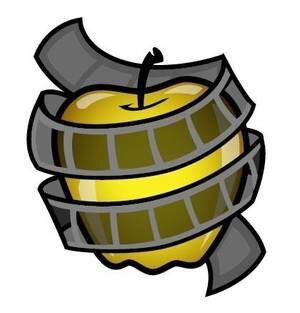
LOGO DESIGNED BY MEENTS ILLUSTRATED (#839)
Permalink
from REVIEW BLOG – Every Movie Has a Lesson https://ift.tt/32xh8By
via IFTTT
from WordPress https://ift.tt/33DfmQx
via IFTTT
0 notes
Photo
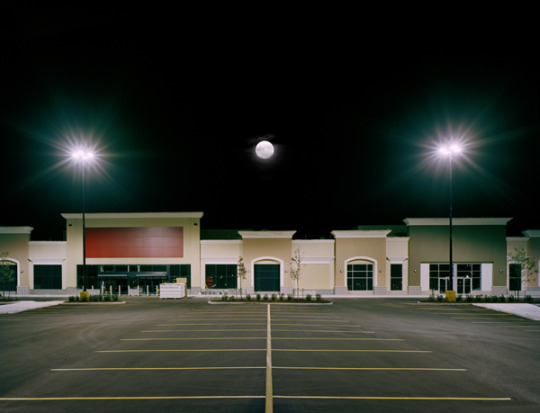
In Focus Gallery
http://www.infocusgalerie.de/en/
City Landscape
Ellen Bornkessel, Peikwen Cheng, Susan Dobson, Elliott Erwitt, Thomas Hoepker
06.03. - 07.04.2017
Vernissage on Saturday, 4th of March 2017 from 7 pm – 9.30 pm
Opening hours:
Thursday – Friday 4 pm – 7 pm, Saturday 11 am – 6 pm
The "altered landscape" has long been a theme in photography. In 1975 William Jenkins curated the exhibition New Topographics at George Eastman House, which featured Robert Adams and Stephen Shore, among others. This seminal exhibition was both a reflection of the local environment, including a highly conceptual, documentary, detached and socially critical comment on an increasingly modern world, which was driven by economic rationality and mostly absent of its makers.
The exhibition City Landscapes (Stadt-Landschaften) at in focus Gallery certainly associates itself with the movement, however, it delves further. Whilst the New Topographics photographers primarily emphasised an objective, documentary focus, the artists in this exhibition are specifically interested in interpreting and examining the relationship between the human being and altered urban landscapes.
Elliott Erwitt’s photographs of adolescents sunbathing on cars and Thomas Hoepker’s rooftop image of a woman sunbaking amidst an urban jungle depict – with a touch of irony – how, even in dismal, constructed or rundown urban landscapes, human beings arrange themselves and yet still dream of more beautiful surroundings or of summer and holidays.
Ellen Bornkessel’s photographs from the series, Play portray people who have adopted the city as their natural environment. They conquer the urban surroundings of cities and make them their own through their nighttime antics. In the series Ghost Mountains, the nightscape is hidden in valleys or behind mountains and illuminated solely by the city’s artificial light.
The landscape is ever changing: whether over the seasons or due to the development of cities. Transformations such as these are documented and deliberated upon by Peikwen Cheng and largely through his nighttime scenes.
Susan Dobson also illustrates nighttime landscapes in her series Moonrise, which due to the moonlight at first appear romantic and upon closer inspection of the uniform townhouse settlements, industrial estates or burning barns, become paradoxical. Another of Dobson’s series’, Retail, in which she employed image manipulation, reveals the interchangeable and bleak make-up of the majority of suburban supermarkets.
0 notes